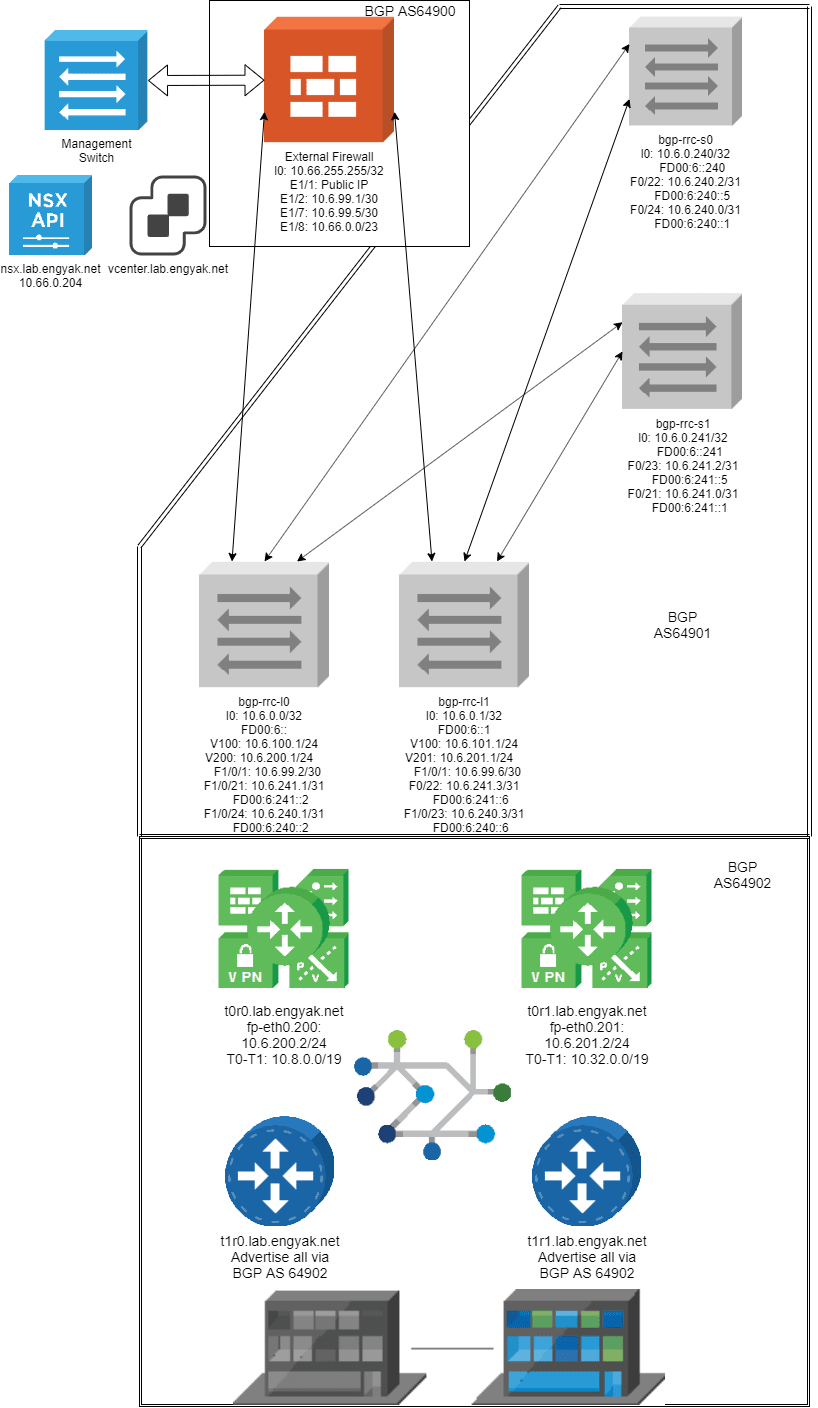First off, let's cover what's been built so far:

To set up an anycast vIP in NSX-T after standing up your base infrastructure (already depicted and configured), all you have to do is stand up a load balanced vIP at multiple sites. NSX-T takes care of the rest. Here's how:
Create a new load balancing pool.

If your Tier-1 gateways have the following configured, you should see a new /32 in your routing table:
Repeat the process for creating a new load balancer and virtual server on your second Tier-1 interface, pinned to a completely separate Tier-0. If multipath is enabled, you should see entries like this in your routing table:
It really is that easy. This process can be repeated for load balancers, and (when eventually supported) multisite network segments.
A few caveats:
- State isn't carried through: if you're using a stateful service, use your routing protocols (AS-PATH is an easy one) to ensure that devices consistently forward to the same load balancer
- Anycast isn't load balancing: This is easy here, as NSX-T can do both. This won't protect your servers from overload unless you use one.
- Use the same server pool: It was (hopefully) apparent that I used the same pool everywhere. Try to keep regional configurations consistent, to ensure that new additions aren't missed for a pool. Server pools should be configured on a per region or per transport zone basis.
Some additional light reading on anycast implementations:











Oldest comments (0)